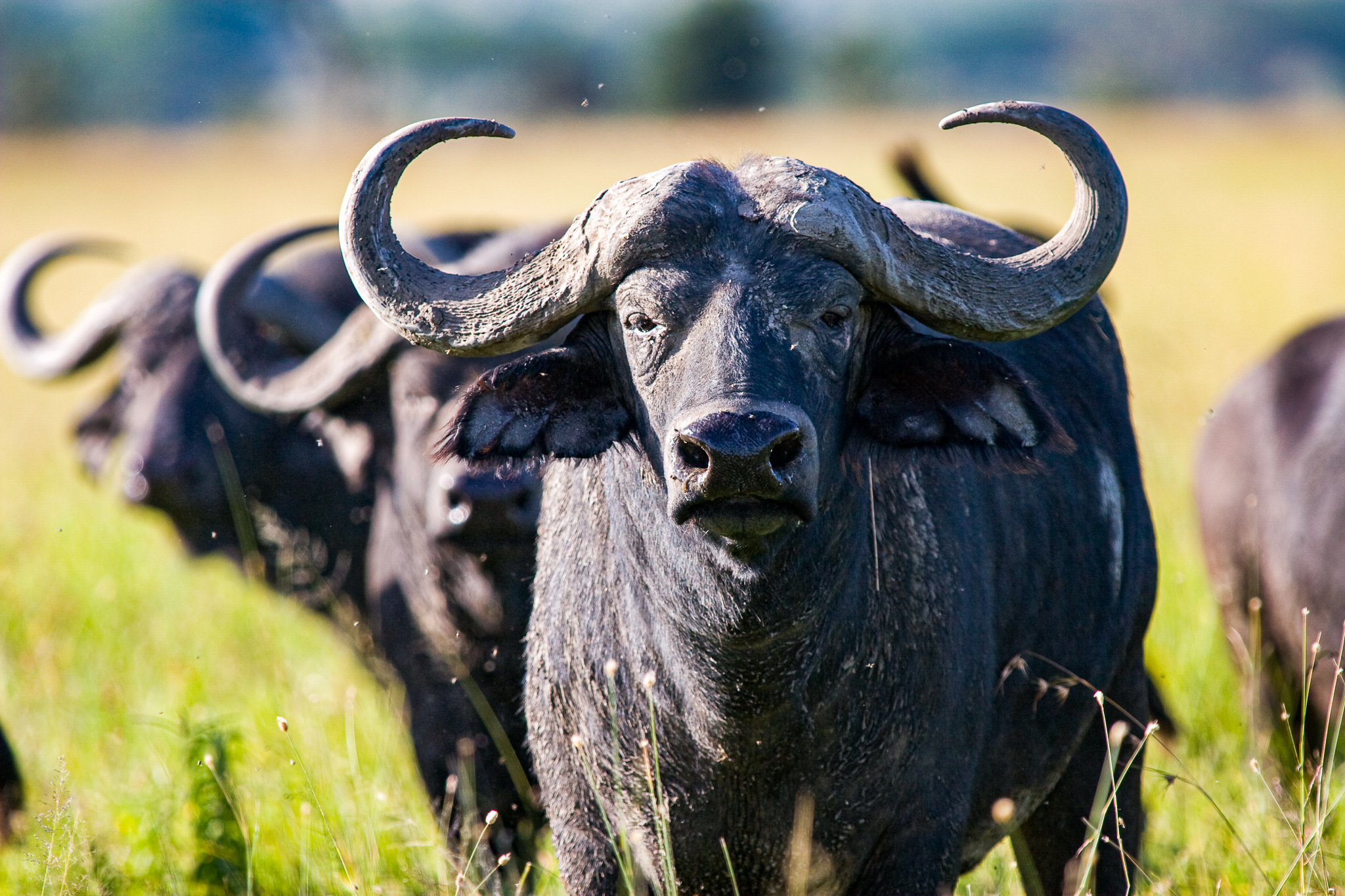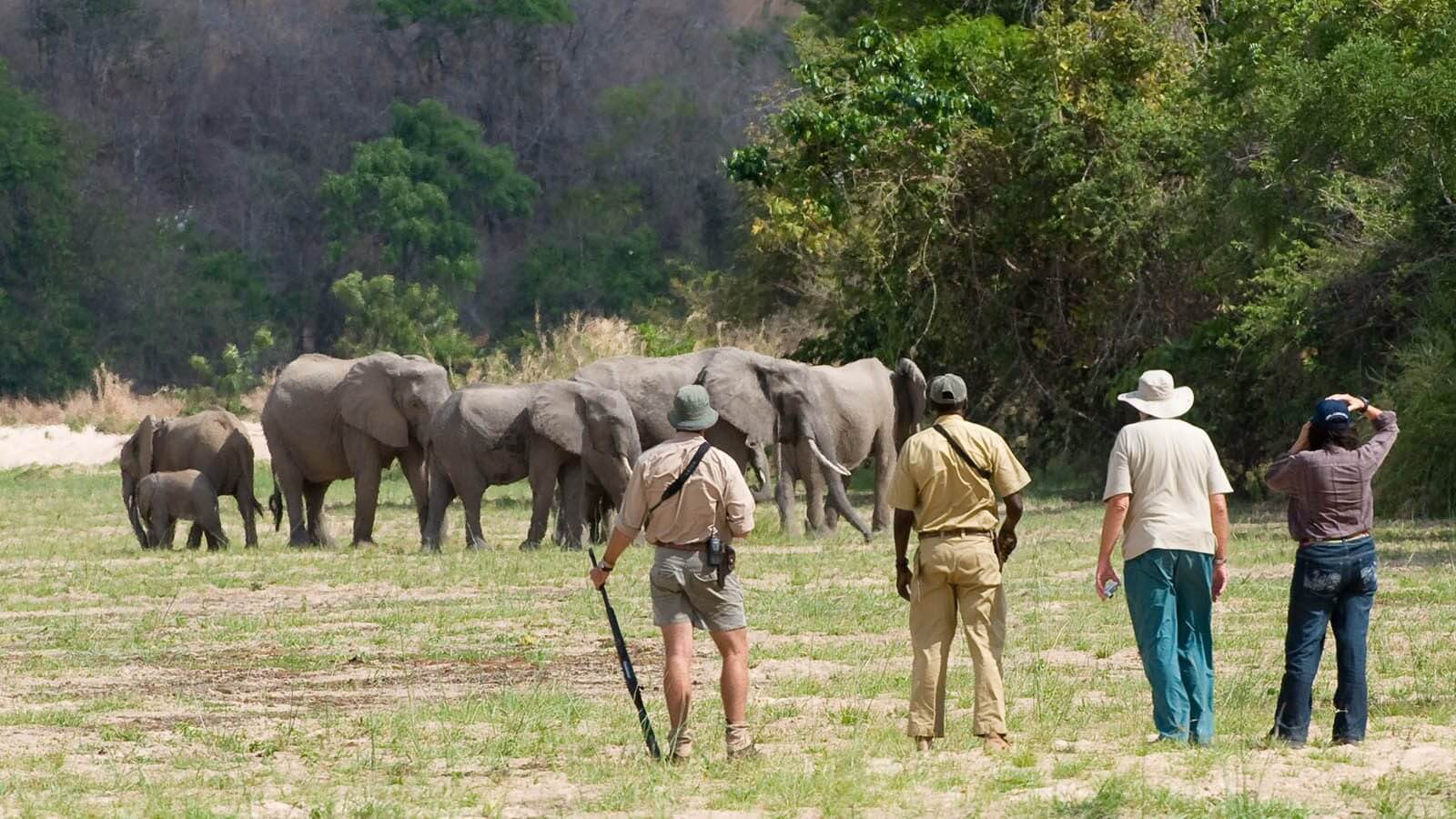Selous Game Reserve: Tanzania African Bush Elephants Experience
Selous Game Reserve, now part of Nyerere National Park, is one of Tanzania’s most iconic and expansive protected areas. Established in 1922, the reserve spans over 50,000 square kilometers, making it one of Africa’s largest wildlife reserves. Named after the British explorer Frederick Selous, the reserve encompasses a diverse array of habitats, including savannahs, woodlands, wetlands, and rivers. This vast and relatively untouched wilderness provides a sanctuary for a wide range of wildlife and offers a unique safari experience characterized by its remote and pristine environment.
A Diverse Ecosystem
Selous Game Reserve’s ecosystem is remarkably diverse, encompassing a variety of landscapes that support an equally diverse range of flora and fauna. The reserve’s key features include the Rufiji River, which meanders through the park and creates fertile floodplains, and the Miombo woodlands, which provide crucial habitats for numerous species. The varying terrain, from open savannahs to dense forests, allows for a rich mosaic of wildlife interactions and ecological processes. This diversity of habitats makes Selous an important refuge for many species, including some that are less commonly found in other Tanzanian parks.
Wildlife of Selous Game Reserve
Selous Game Reserve is renowned for its impressive wildlife populations, particularly its large herds of elephants and buffaloes. The reserve’s extensive and varied habitats provide ample grazing and water sources, supporting these large herbivores in significant numbers. Lions and wild dogs are also prominent, with the latter being one of the reserve’s notable attractions. Selous is one of the few places in Africa where you can encounter wild dogs in their natural habitat, adding an exciting element to any safari experience.
In addition to these iconic species, Selous is home to a variety of other mammals, including giraffes, zebras, hippos, and crocodiles. The reserve’s diverse ecosystems also support numerous antelope species, such as elands, impalas, and sable antelopes. This rich tapestry of wildlife ensures that visitors experience a dynamic and varied safari adventure.
Bird Watching Paradise
Selous Game Reserve is a paradise for bird enthusiasts, with over 440 bird species recorded within its boundaries. The reserve’s diverse habitats provide ideal conditions for both resident and migratory birds. Notable species include the majestic fish eagle, the vibrant lilac-breasted roller, and the rare and elusive Secretary bird. The Rufiji River and its floodplains attract numerous water birds, including herons, egrets, and kingfishers. Bird watching in Selous offers an exceptional experience, with opportunities to observe and photograph a wide range of avian life in their natural habitats.
Safari Activities in Selous
Selous Game Reserve offers a range of safari activities that distinguish it from other Tanzanian parks. Traditional game drives are a popular way to explore the reserve, providing opportunities to witness its diverse wildlife and landscapes. The reserve’s extensive road network allows for both day and night game drives, with the latter offering the chance to observe nocturnal species and experience the park’s nighttime ambiance.
Boat safaris on the Rufiji River are a unique feature of Selous, offering a different perspective on the park’s wildlife and landscapes. These water-based safaris allow visitors to get close to hippos and crocodiles, as well as observe birds and other wildlife along the riverbanks. The boat safaris are a peaceful and scenic way to experience the reserve’s natural beauty and gain insights into its aquatic ecosystems.
Walking safaris are another highlight of visiting Selous, providing a more immersive and intimate safari experience. Led by experienced guides, these walks offer a chance to explore the reserve’s flora and smaller fauna, as well as learn about animal tracks and other signs of wildlife activity. Walking safaris enhance the safari experience by allowing visitors to engage with the environment on a deeper level.
Comparative Adventure Experiences in Iconic National Parks
Exploring other iconic Tanzanian national parks can complement a visit to Selous Game Reserve, providing a comprehensive safari adventure with varied experiences.
- Serengeti National Park: Known for the Great Migration, where millions of wildebeest and zebras traverse the plains in search of fresh grazing lands. Serengeti offers exceptional game drives and the option of hot air balloon safaris, providing a unique aerial view of the park’s vast landscapes and wildlife.
- Ngorongoro Crater: An ancient volcanic caldera that serves as a wildlife haven with high concentrations of species such as black rhinoceroses, lions, and elephants. The crater’s enclosed environment provides impressive wildlife sightings and stunning views of the crater floor.
- Tarangire National Park: Famous for its large elephant herds and distinctive baobab trees, Tarangire offers unique game viewing experiences, particularly during the dry season when wildlife congregates around the Tarangire River.
- Ruaha National Park: A remote and expansive park with significant populations of elephants and lions, as well as a diverse range of other wildlife. Ruaha’s diverse landscapes and low visitor numbers provide an off-the-beaten-path safari experience.
- Lake Manyara National Park: Renowned for its tree-climbing lions and diverse bird species, including flamingos and pelicans. The park’s varied habitats offer a different safari experience with opportunities for both wildlife viewing and scenic beauty.
Conservation Efforts and Challenges
Conservation is a critical focus in Selous Game Reserve, with efforts aimed at preserving its unique ecosystems and wildlife. The reserve faces challenges such as poaching, habitat degradation, and human-wildlife conflict. Conservation initiatives include anti-poaching measures, wildlife monitoring, and community outreach programs. Sustainable tourism practices are encouraged, with a focus on minimizing environmental impact and supporting local conservation efforts. Visitors play a crucial role in these efforts by adhering to park regulations, supporting eco-friendly lodges, and participating in conservation activities.
Cultural Encounters and Community Engagement
Selous Game Reserve is situated near several local communities, including the Wazaramo and the Ndamba people. Cultural tours offer visitors the opportunity to learn about these communities’ traditional lifestyles, customs, and practices. Engaging with local residents provides insights into their agricultural practices, crafts, and social customs. Cultural experiences enhance the safari adventure by adding a cultural dimension and fostering positive relationships between visitors and local communities. These interactions contribute to the overall safari experience and support community-based tourism initiatives.
Accommodation Options and Safari Logistics
Selous Game Reserve offers a range of accommodation options to suit different preferences and budgets. From luxury lodges with panoramic views of the reserve’s landscapes to more affordable campsites, visitors can choose from various lodging styles. Many lodges and camps provide all-inclusive packages that include guided game drives, meals, and other amenities. It is advisable to book accommodations in advance, especially during peak travel seasons, to ensure availability and secure the best options for your safari experience.
For a seamless safari experience, visitors should plan their logistics carefully. The reserve is accessible by road from Dar es Salaam, which is approximately a 5-6 hour drive away. There are also small airstrips within the reserve for those preferring to fly in. When preparing for a visit, it is essential to bring appropriate clothing, including lightweight, neutral-colored garments for daytime safaris and warmer layers for cooler evenings. Essential items include binoculars, a camera with a zoom lens, sun protection, and insect repellent.
Wildlife Photography Tips
Wildlife photography is a popular activity in Selous Game Reserve, and capturing the park’s diverse landscapes and animals requires specific techniques and equipment. To photograph the reserve’s wildlife effectively, consider using a camera with a high zoom lens to capture detailed shots of animals from a distance without disturbing them. Early morning and late afternoon are the best times for wildlife photography, as the lighting is softer and the animals are more active. Patience and respect for wildlife are crucial, as they contribute to successful and ethical photography.
The Best Time to Visit Selous
The optimal time to visit Selous Game Reserve depends on what you wish to experience. The dry season, from June to October, is ideal for wildlife viewing, as animals congregate around water sources and game drives are more productive. During this period, the weather is generally clear, and wildlife sightings are at their peak. The wet season, from November to May, brings lush vegetation and vibrant birdlife, making it a great time for bird watching and enjoying the reserve’s scenic beauty. The wet season also offers fewer crowds and lower accommodation rates, providing a more tranquil Africa safari experience.
Conclusion
Selous Game Reserve, now part of Nyerere National Park, stands out as one of Tanzania’s most expansive and remote wildlife destinations. Its diverse landscapes, impressive wildlife populations, and range of safari activities make it a premier choice for travelers seeking an authentic and immersive Africa safari experience. From its large herds of elephants and wild dogs to its rich birdlife and scenic beauty, Selous offers a dynamic and rewarding adventure that rivals other iconic Tanzanian parks. For those looking to explore Tanzania’s natural wonders, Selous Game Reserve remains a top destination, delivering unforgettable moments and a deep connection to Africa’s untamed wilderness.



